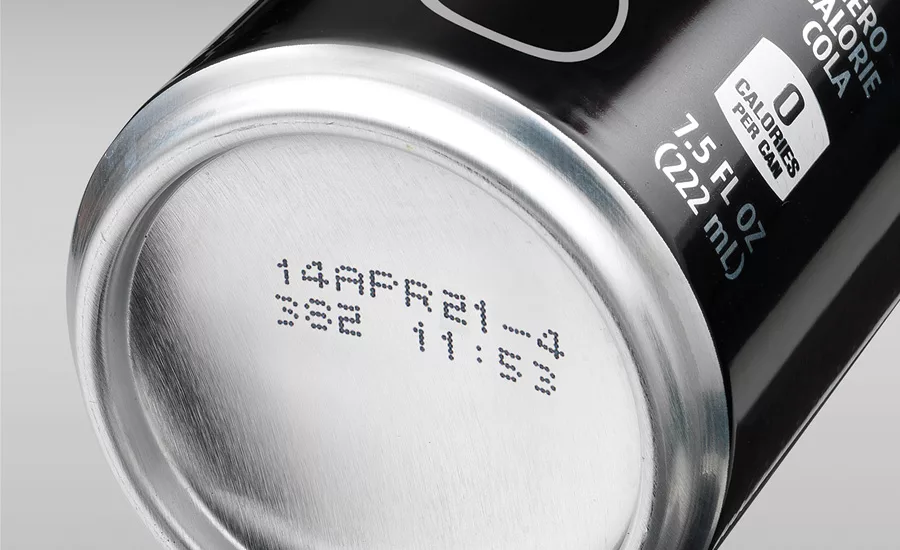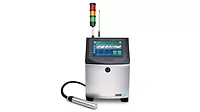Packaging shifts impact coding equipment market
Adoption of aluminum cans, plant-based packaging influences coders

The challenges of today’s waste stream is motivating brand owners to help solve the problem. In late 2018, Atlanta-based The Coca-Cola Co. extended a loan to Ioniqa Technologies to aid in the development of Ioniqa’s proprietary technology to produce high-grade, recycled PET content from hard-to-recycle PET waste. While in June, Purchase, N.Y.-based PepsiCo Inc. announced that LIFEWTR will be packaged in 100 percent rPET and bubly no longer will be packaged in plastic. The company’s AQUAFINA water brand also will offer aluminum can packaging in U.S. foodservice outlets.
Both these announcements are examples of how beverage-makers are tackling the plastic waste problem through their brand portfolios and packaging equipment suppliers are taking notice.
“In response to environmental concerns regarding plastic, beverage companies are shifting toward aluminum cans, recycled PET (rPet) and plant-based bottles,” says Kathryn Fox, vertical marketing manager at Videojet Technologies, Wood Dale, Ill.
As beverage manufacturers make changes to primary packaging materials, equipment suppliers are tasked with ensuring their products still operate efficiently and efficaciously, Fox details.
“For example, as beverage manufacturers shift toward aluminum cans, a number of challenges must be considered,” she says. “In terms of coding and marking, printing a legible code on aluminum and curved surfaces at extremely high speeds can prove to be difficult for coding equipment that’s not designed for this kind of production.
“Therefore, high-speed continuous inkjet (CIJ) printers and laser marking systems dominate coding and marking in the aluminum packaging sector,” Fox continues. “This is because both technologies meet the necessary speeds and unique requirements, like coding on the concave bottom of aluminum cans.”
However, when it comes to rPET packaging or plant-based materials, Fox notes that laser coding technology is the preferred solution.
“With this in mind, Videojet offers a dedicated 9.3 wavelength that is engineered for specific use with rPET and plant-based plastics,” she says. “Another choice for printing on rPet and plant-based substrates is CIJ as many Videojet CIJ inks are designed to provide optimal adhesion on these substrates, including certain inks within the Videojet iQMarkTM portfolio of products.”
‘Everything Grows Together’
As production and packaging technology evolves, the list of capabilities that is demanded of these products continues to grow.
“The major trend in the industry is production line integration,” says Michael Orcutt, director of business development for Matthews Marking, Pittsburgh. “The ability to eliminate human error and coding violations along with better traceability is impacting every beverage manufacturer, whether distilled spirits, soft drinks and juices to water bottling facilities.”
Orcutt explains that many marking and coding solution providers will use third-party software for line integration. However, this practice is not without its challenges.
“Although this can be effective, most third party software can be a security risk so IT departments are hesitant to adopt many of these solutions,” he says.
To ease these concerns, Matthews Marking offers its MPERIA controller platform. “It’s not a third party software so there are no security issues compared to other marking and coding solutions,” Orcutt says. “The other advantage of MPERIA is it’s open architecture, which allows Matthews to integrate production lines with existing equipment in place, whether a Matthews branded product or competitive marking device.”
Videojet Technologies’ Fox notes how constant interaction with consumers is motivating beverage-makers to use coding technology to further that goal.
“Promotional codes, personalized messages and unique DataMatrix or QR codes in a bottle cap or on the label can all drive interaction and enhance a customer’s loyalty to a brand,” she says. “Both continuous inkjet and laser marking technologies offer an array of solutions to meet requirements for product customization with variable data right on the packaging line.”
Coding technology suppliers also are advancing capabilities of their products, which can help streamline the production and packaging processes for their customers.
“Advances in the Industrial Internet of Things (IIoT) are changing what is possible for lean manufacturing and beverage-making overall,” Fox says. “The latest coding solutions offer data visualization and analytics software to help accelerate the collection, consistency and accuracy of data. This can help beverage-makers to more quickly identify specific areas of concern and reduce waste, prioritize and evaluate improvement activities, and measure effectiveness on the production line.”
As coding technology evolves, Matthews Marking’s Orcutt notes that customers still need solutions that meet the basic needs of their facility. “[Beverage-makers want] permanent technology that is simple to use and can be integrated easily into their production facilities,” he says.
‘Selection Day’
Like numerous production tasks, beverage-makers must consider a number of factors when deciding whether to employ laser or inkjet coders.
“Laser marking systems offer reduced downtime, elimination of consumables (both for cost and environmental reasons), permanent marks, and reduced preventive maintenance and costs sometimes associated with ink-based printers,” Videojet’s Fox says. “Videojet steered beam lasers can mark products in motion as they travel on a production line. They can also mark in a stationary, or static, mode where the product does not move as the laser mark is applied.
“In addition, lasers can generate unique marks, like those produced by a color change from a chemical reaction or an ablation of a product surface, depending on the packaging type and the laser’s intensity,” she continues. “Keep in mind that when using lasers, fume extractor filters need to be changed periodically, and safety guards must be installed around the output optic and conveyor to limit operator access.”
Matthews Marking’s Orcutt highlights the advancements that have taken place in regards to laser technology and markings on primary packaging. “Lasers provide a permanent mark and eliminate consumables for plastic and laser containers,” he says. “We see an increasing amount of both laser and TIJ (lower TVO than CIJ) for carton marking applications.”
Matthews Marking also is a distributor of Solaris Laser SA laser coders. “Solaris has the widest range of laser solutions in the industry,” Orcutt says. “Where some companies sell a 30w laser for carton marking, Matthews via Solaris is utilizing 10w. The range of offering is beneficial not only to Matthews but our clients, allowing a lower cost point [and] in many cases allowing clients to purchase back-up lasers.”
Beyond laser coders, inkjet equipment also can be a valuable solution.
“CIJ offers a relatively low purchase price, flexible printheads for easy integration, and the ability to print on almost any packaging material,” Videojet Technologies’ Fox says. “CIJ inks are available in an array of colors to print the code while complementing a package’s design.”
To support customers that employ CIJ solutions, Videojet offers its 1580 version. “[T]he Videojet 1580 features tools to optimize consumables, easily replaceable components, and a streamlined user interface that helps eliminate potential user errors,” she explains. “Ideal for high-speed beverage-makers, we also introduced Videojet OPTIMiZE software with the Videojet 1580 to monitor printer performance and usage parameters in order to recommend possible opportunities to minimize cost and consumption based on those operational parameters.”
No matter which coding technology that beverage manufacturers decide to use for their business, suppliers expect this market will continue to meet the growing needs. BI
Looking for a reprint of this article?
From high-res PDFs to custom plaques, order your copy today!





